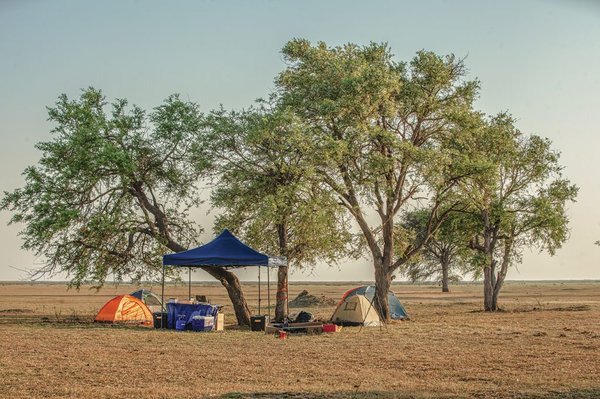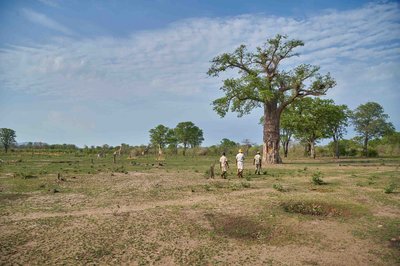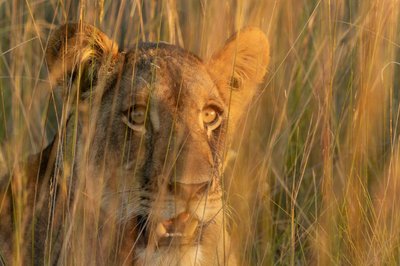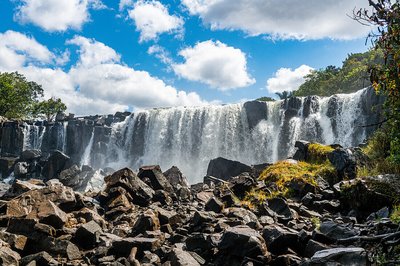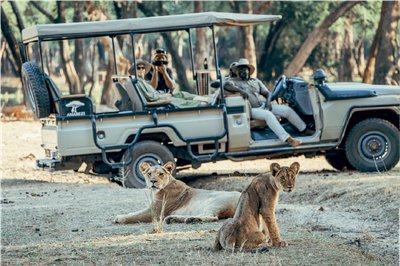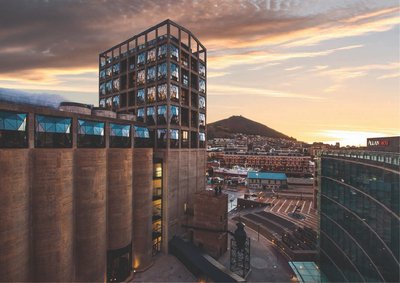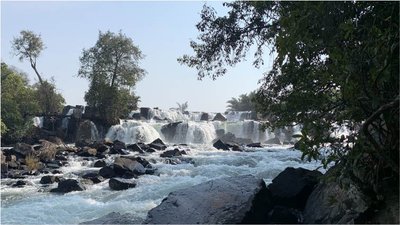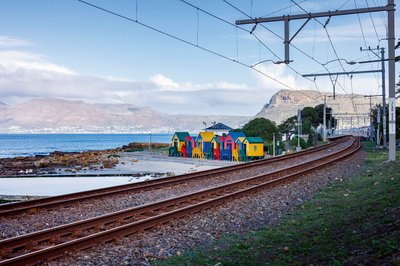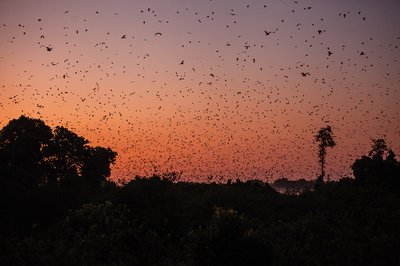Imagine waking to the roar of lions, dining beside rivers filled with hippos, and falling asleep under a star-filled sky. Zambia’s national parks offer more than just camping experiences; they’re gateways to primal adventures, from bat migrations that darken the sky to hot springs steeped in ancient history.
Camping offers an unparalleled experience of Zambia’s wildlife, as well as the opportunity to be part of the scenery instead of just observing it. Picture yourself dining by the same watering holes that antelopes frequent, sleeping directly under the glistening stars and having the nature you travelled miles to experience be close enough for you to touch. From bird watchers' paradises to historians' dreams, here are some of the best parks for camping in Zambia.
South Luangwa National Park: The Ultimate Wildlife Camping Safari
Home to trees more than a millennium old and a wild array of wildlife, including buffalo, elephants, giraffes, and hippos, and famed for the oxbow lagoons that form around its river, South Luangwa National Park offers a unique experience. Popular with documentarians and filmmakers for its abundance of unshy wildlife, the chances of spotting a variety of species, both landbound and flying, are more certain than questionable.
Available activities include walking safaris, game drives (both night and daytime), and the Bush Spa – a spa experience that utilises traditional Zambian ingredients, situated on a wooden deck upon a lagoon. At Tribal Textiles, create your designs and have them brought to life by experienced craftspeople.
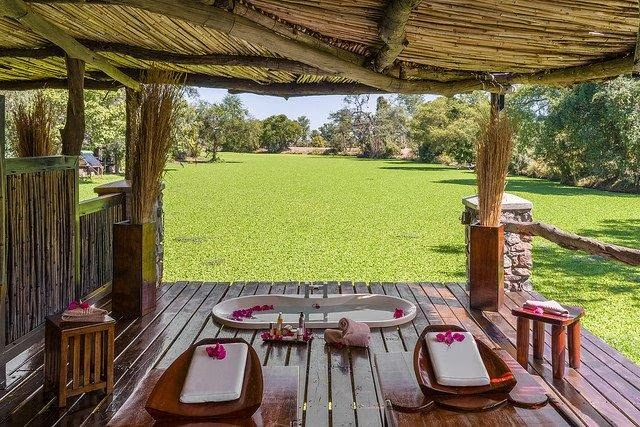
A wide range of hand-painted home décor is also available, and the company is committed to promoting community, sustainability, and wildlife conservation. While Mulberry Mongoose offers customers the opportunity to buy jewellery fashioned from snare wires recovered from poaching traps. Proceeds also go to anti-poaching efforts, ensuring you will leave with more than just something pretty for your jewellery box.
There is a range of campsites available on the grounds, suiting a variety of preferences and budgets, from en-suite chalets to campfire-side tents.
Croc Valley Camp
Located on the banks of the Luangwa River, just 500 metres outside the entrance of the park, Croc Valley Camp offers riverfront camping, tented chalets, as well as individual rooms, and its breakfast area has the distinction of overlooking a river bursting with wildlife. Meal options include both self-catering and full board.
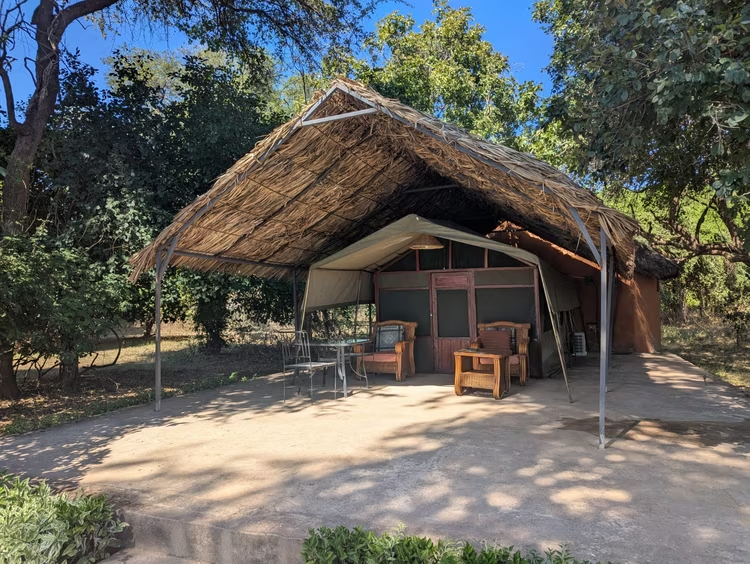
Contact Details: +260977175172 / +260979414505
Wildlife Camp
Wildlife Camp offers a solid range of options from affordable to luxurious. A set of rustic chalets is arranged around the lagoon and riverbank, each provided with a veranda to supply you with the best view. There is also the option of en-suite safari tents from June to October. These boast two beds with open-air showers, mosquito nets, electricity, a veranda, a fan, a safe, and toilet facilities. It's Bush Camp hosts a range of basic tents situated on the banks of the Luangwa River. These are equipped with shared washrooms with hot showers, fresh drinking water, power points, a bar, and a swimming pool. Campers get to experience an overnight walking safari to reach the bush camp, as well as three-course dinners cooked over an open campfire and bread freshly baked in a termite mound oven.
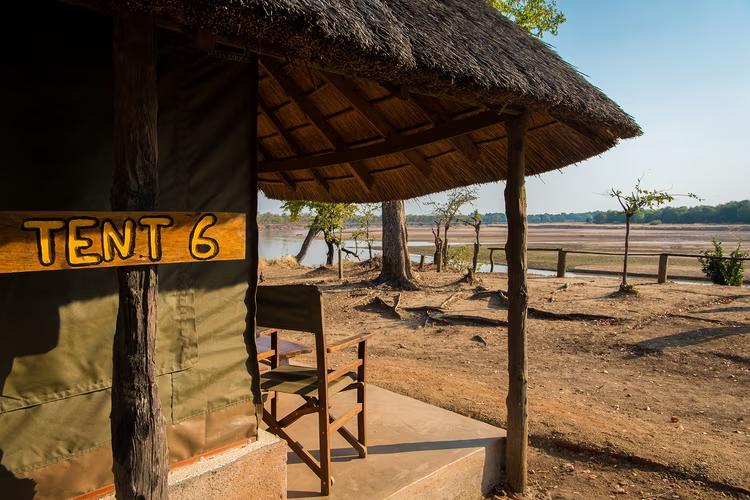
Contact Details: +260968852028
Accessibility & Safety
Mfuwe is the closest town to South Luangwa and also hosts an airport, which receives direct flights from Lusaka. Its driving distance from Lusaka is around 9 to 10 hours. It is best accessed through Chipata. The road is easy to access during driving season, and though a 2-wheel drive is manageable en route to Mfuwe, it is advisable to have the use of a 4-wheel drive inside the park. Because the park is rich in big game that roam around, adhere strictly to the camp rules and avoid walking alone at night.
Kafue National Park: Zambia’s Untamed Wilderness for Birders & Adventurers
Established in 1924, Kafue National Park is Zambia’s largest and oldest national park. It has the largest variety of hoofed mammals of any national park south of the Congo Basin, as well as being one of the two national parks in Zambia where cheetahs occur. Spanning over 22,000 km², the park is also home to leopards, African wild dogs, and hippos, to name just a few mammals. The park is known as a birders' paradise, with over 500 species of birds recorded in its vicinity, as many as in the whole of Europe.
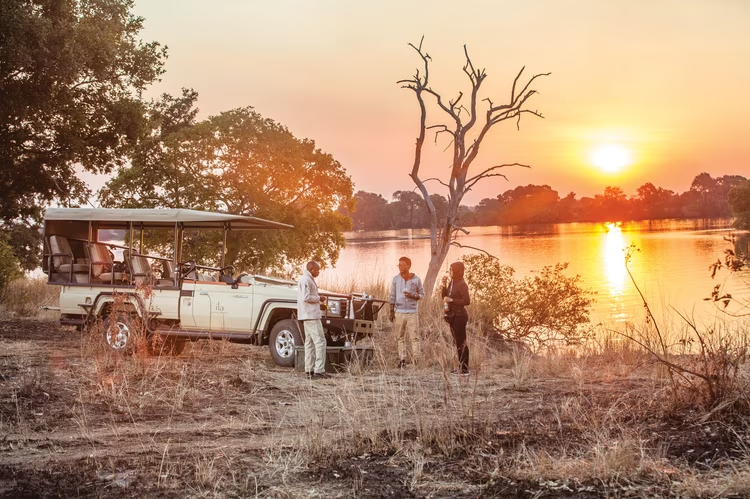
Comprised mainly of woodlands, open plains, and areas that flood seasonally, Kafue offers a wide range of experiences and wildlife.
Available activities include safari boat cruises, game drives, night drives, sunrise hikes, yoga classes, birding, visiting the rapids, bush breakfasts, out-of-camp dining, and fishing.
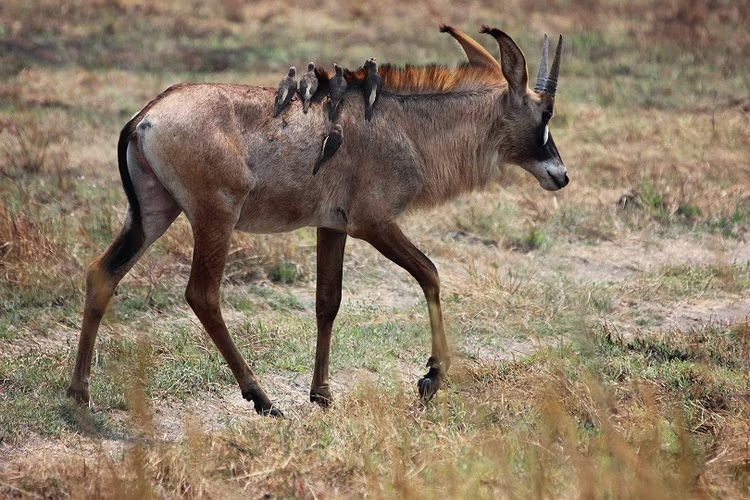
Kasabushi Camp
Positioned on the Kafue River, Kasabushi Camp combines the thrill of adventure with the ease of the modern world. Offering tented chalets that provide a glamping experience, fitted with Egyptian cotton sheets, as well as luxurious outside showers that overlook the river, a full meal service, and a traditional campsite with shared bathrooms and a self-catering option. The camp offers a natural plunge pool, laundry service, dining and lounging areas, battery charging facilities, and runs on solar energy.
Accessible: March to December
Contact Details: 0979668343
KaingU Safari Lodge
Directly opposite Kafue National Park and reachable via a 10-minute boat ride, KaingU Safari Lodge offers campers a private experience with guests able to choose between tented chalets and a two-bedroom family house. On offer is also a private ablution block as well as a private riverfront view. Beverages, snacks, and meals are included, as well as two safari activities per day. Visual highlights include a deck beneath the forest canopy that overlooks the river and nightly bonfires held in the fire pit. The lodge is also focused on sustainability, and a percentage of every guest's nightly fee goes into supporting local schools.
Accessible: April to November
Contact Details: [email protected] or [email protected] (Please note that the lodge is unreachable by phone).
Accessibility & Safety
Different areas of the park are accessible at different times. As with most things, the rainy season may make the already rough roads harder to access. However, the emerald season in the park makes for a magnificent sight, and for those not deterred by rough travels, multiple areas of the park should still be open. A 4-wheel drive is recommended to enter the park.
Kafue National Park is accessed through Mumbwa or Mongu Road. As the park spans such a large area, it is recommended to plan fuels and supplies accordingly, and as the roads leading up to it are remote, to carry extra fuel, water, and a spare tyre.
Lochinvar National Park: Where Birds & Ancient Mysteries Take Centre Stage
Although lacking in big mammals, Lochinvar more than makes up for it with its mixture of beauty and birdlife. Situated on the southern edge of the Kafue Flats, it consists of a mixture of floodplains, lagoons, and ancient termite mounds. It is also home to more than 420 bird species.
Activities include birding, game drives, walking safaris, and several natural and historical sites. Gwisho Hot Springs extends from the end of the Kafue Flats basin. Operating between 60 and 90 degrees Celsius, the steamy waters are cloaked by an area where large quantities of naturally preserved animal and plant remnants are found.
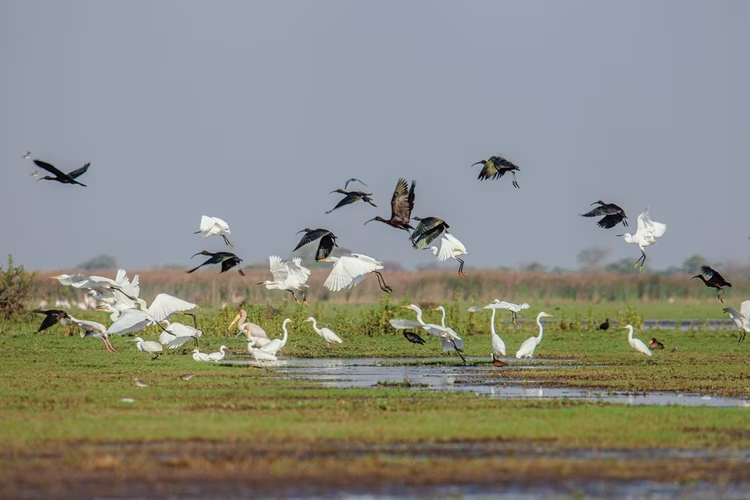
Sebanzi Hill is a natural heritage site that contains the archaeological remnants of the village of a tribe that occupied it from the Iron Age. Located there is also a baobab tree over 2,000 years old, where vultures frequently nest. The hill offers an unrivalled view of the national park.
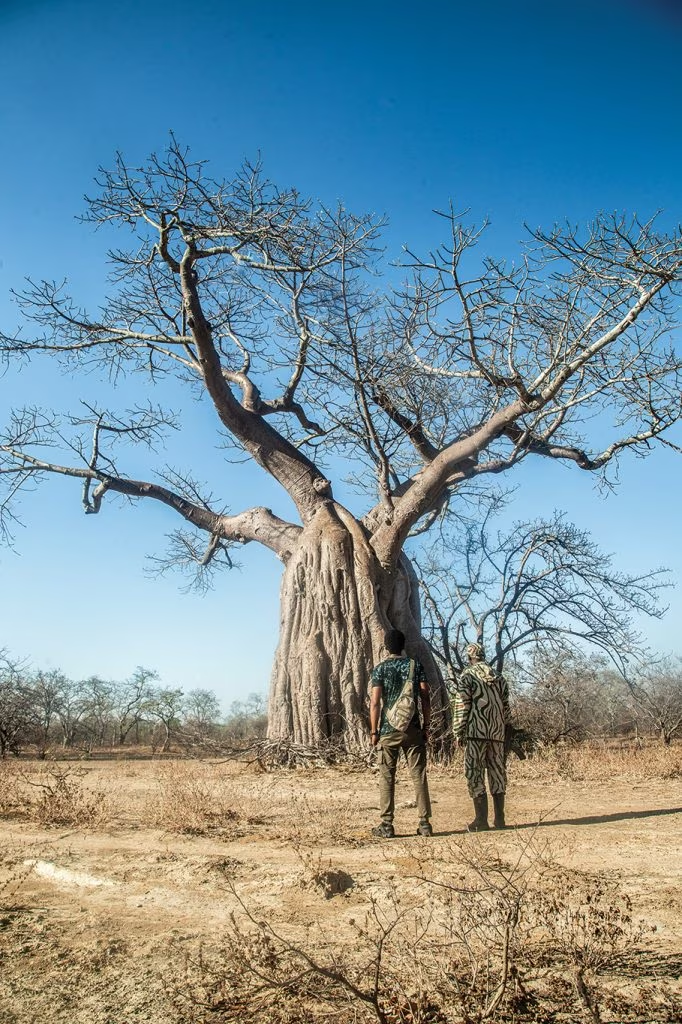
Drum Rocks is considered both a natural wonder and a sacred site that consists of unique rock formations generated by years of erosion. When hit at different points and with different objects, the rocks have the unique distinction of varying in sound depending on how they are struck, producing sounds one would expect from a shallow object. Due to this, it is often seen as a ritual site.
Although there are no lodges or campsites linked to Lochinvar National Park, camping is still allowed at a daily rate and through contact with the park.
Contact Details: 0211278482
Email: [email protected] or [email protected]
Camping in Lochinvar is a rustic, back-to-basics experience. There are no luxury lodges or formal campsites with manicured lawns, and that’s part of the charm. Most visitors opt for self-catering bush camping near the lagoon or among the scattered trees in the southern woodlands. There are designated areas where campers can pitch tents, though facilities are limited to basic ablutions or none at all. You’ll need to bring your water, food, and all camping gear. Some spots offer scenic views of Chunga Lagoon, and the solitude means you’ll likely have entire stretches of wilderness to yourself.
Accessibility and Safety
The best route to reach the park is from Monze in Southern Province, after which a rough dirt road leads the way towards the park. For this, a 4-wheel drive is strongly recommended.
Most risks in the game park are due to environmental factors such as mosquitoes and tsetse flies. It is advisable to pack long-sleeved clothing and insect repellent. As some areas flood seasonally, be cautious around waterlogged zones and lagoons.
Blue Lagoon National Park: Lusaka’s Hidden Wetland Wonderland
Only about 100 km west of Lusaka lies Blue Lagoon National Park, an environment still relatively untouched by crowds and buildings, but abundant in incredible nature and extraordinary birdlife. Once under military protection and unopened to the public, Blue Lagoon is now available for the public to witness the majestic seasonal transformations of its plains turning from dry to wetland, as well as the herds of Kafue lechwe and birds en route from their migration.
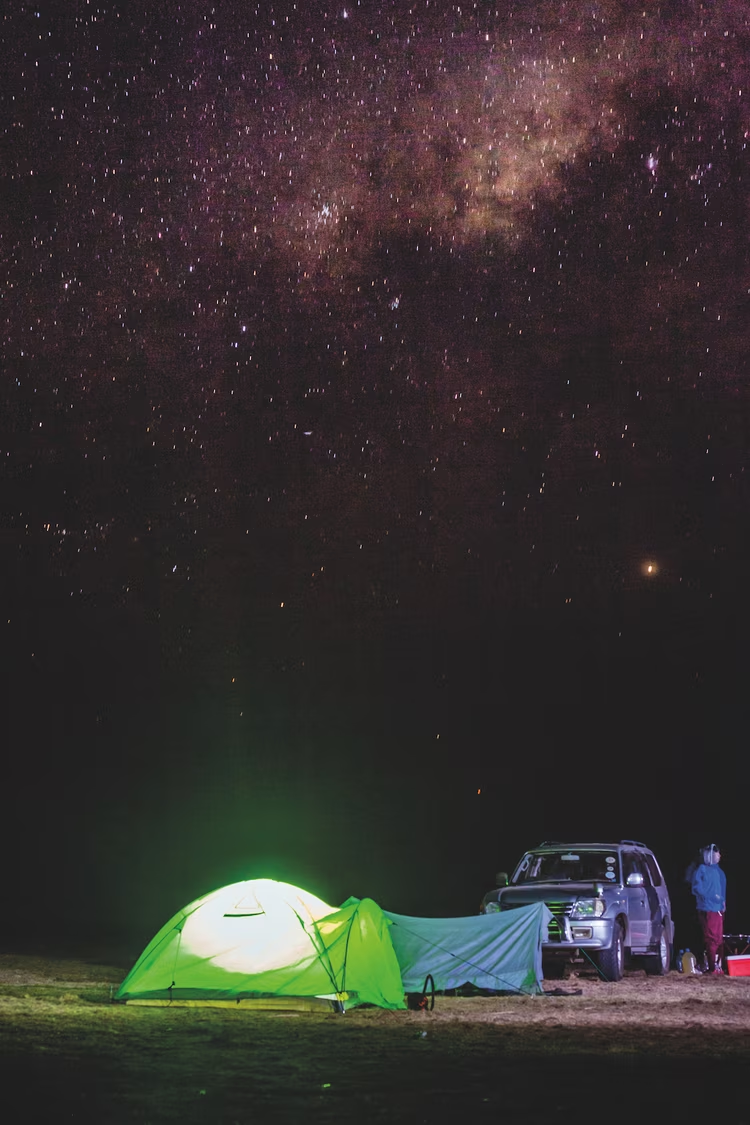
The flatness of the landscape sets it apart from other national parks, and the giant river pythons that frequent the area in search of the abundant birds and insects make for a thrilling sight. As Blue Lagoon is so underdeveloped, camping here gives an unrivalled drop into nature and an opportunity to both witness and be a part of it. Kayaking is also available.
Blue Lagoon is an ideal campsite for the most avid of campers who would like as thin a boundary between them and nature as possible. There’s no shop, restaurant, or fuel station, so pack everything in, including drinking water, food, and camping gear. Most camping is done in designated areas near the park reception, where guests can set up tents. There are also chalets available. These are converted from the original, an old farmhouse, and offer a rustic but charming base. There are two older chalets and two newer ones available for those seeking more comfort, but campers should come prepared and pack all the essentials, including food, drinking water, and camping gear.
Contact Details: 0971593205
Accessibility and Safety
In the dry season, the park can be reached with a 2-wheel drive, though a 4-wheel drive is safer during the rainy season when roads can become waterlogged.
Due to the absence of large predators, there is not much risk in the park. Guests are advised to pack insect deterrents, walk on marked paths, and, if a river python is spotted, avoid approaching it and apply any prior instructions from guides.
Liuwa Plains: Africa’s Best-Kept Wildebeest Secret
Tucked in the western corner of Zambia and host to rolling grasslands uninterrupted by the sight of trees, as well as one of the largest wildebeest migrations in Africa, Liuwa Plains is a national park that is worth every mile you trek to get there.
During the rainy season, with the flooding of plains, tens of thousands of blue wildebeest migrate to the area, bringing with them zebra, oribi, and a variety of wetland birds.
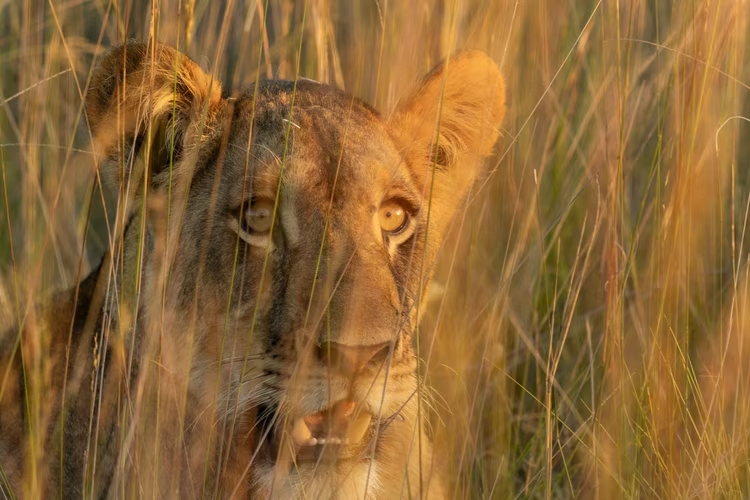
Hyenas are a common sight in the park, and Liuwa is also home to an iconic Zambian story, Lady Liuwa, a lioness who lived and survived for years without a pride, an incredible feat, due to excessive poaching in the area. Due to a change of management and staunch conservation efforts, lions have been slowly reintroduced to the area.
There are a few designated campsites within the park, such as Kwale and Katoyana, which offer basic facilities like pit latrines and bucket showers, but that’s as far as the amenities go. You’ll need to bring all your supplies, including food, drinking water, fuel, cooking gear, and recovery equipment.
Contact Details: 0964168394
Website: https://www.africanparks.org/the-parks/liuwa-plain
There is also a 5-star campsite at King Lewanika Lodge for campers desiring a more extravagant experience, complete with luxury safari tents, each with multiple bedrooms and bathrooms, and a range of activities, culinary delights, and personal comforts that will make the stay memorable.
Contact Details: [email protected]
Accessibility and Safety
Liuwa is an incredibly remote park to reach, and guests will have to pass through Mongu, Kalabo, and then cross the Zambezi River via pontoon. From there, it's a long drive to the park, and a 4-wheel drive is essential to manage the roads; self-driving is only recommended for the most experienced overlanders. It is advised to be equipped with spare fuel, tyres, water, and a navigation tool.
Due to the remoteness of the area, inform park rangers of your intended journey and route so they may be able to assist you in case of danger. Pack a standard first aid kit containing medical essentials.
Kasanka National Park: Bat Clouds & Sacred Forests Await
Located in the Chitambo District, Kasanka National Park is famed for hosting the world's largest bat migration. From October to December, ten million fruit bats darken the skies, their black silhouettes enhancing the pinks and oranges of sunrise and sunset as they set out and return from their daily foraging. The woodlands and forests of the park are also home to over 470 bird species and the sacred Bufumu Forest, home to the burial sites of chiefs as well as Zambia’s tallest Indigenous tree, a 65-metre-tall Mofu tree.
Explore the wildlife through walking safaris, game drives, or even cycling. Get your feet wet with fishing, canoeing, kayaking, or motorboating on the river.
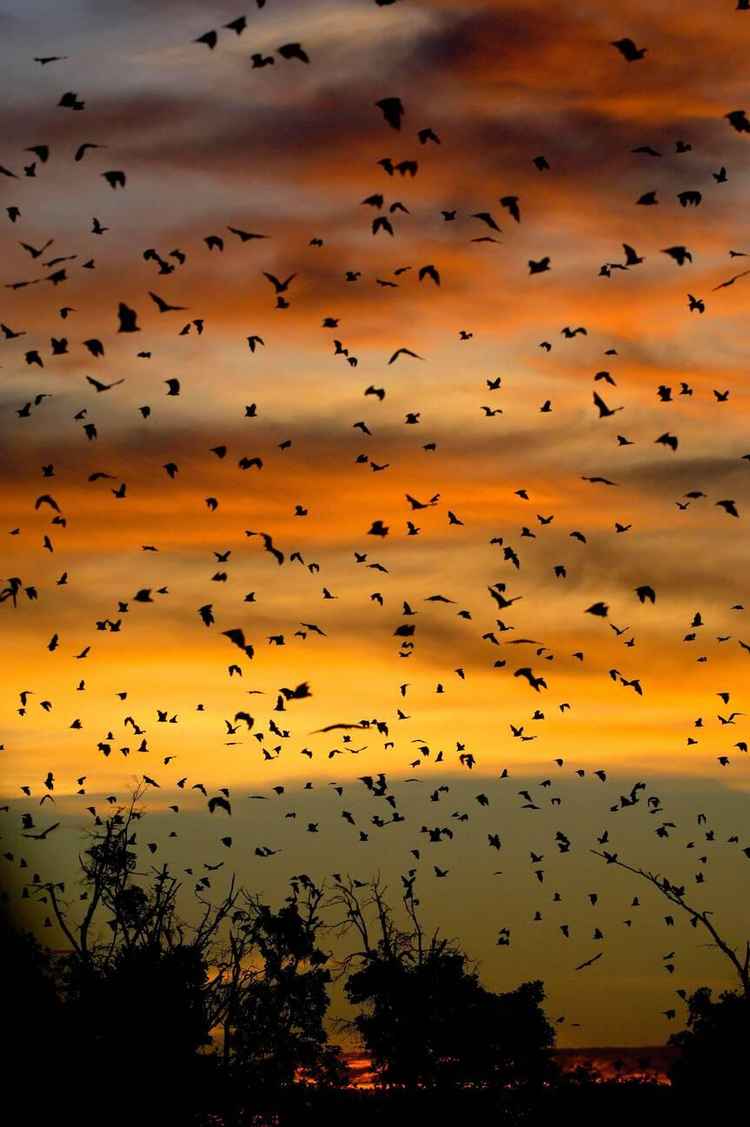
There are three campsites within the park, each with its unique appeal, from Kapabi, where birds and elephants visit, to Kabwe, which sits downstream between the bat forest and the Bufumu Forest. Campers are required to bring their tents and equipment, but each site has bucket showers, flush toilets, and cooking sites, as well as staff prepared to assist with firewood and hot water.
Contact Details: [email protected]
+260966689 816
Accessibility and Safety
The park can be accessed through Serenje or Mpika, and while the road conditions are decent in the dry season, a 4-wheel drive is still recommended. Standard safety guidelines for any park with large mammals apply.
Whether you’re tracing migration paths across open plains, watching birds fly above floodplains, or sitting silently by firelight under ancient trees, each park offers its brand of wilderness magic. Give in to the temptation to leave the city and experience the magic of a Zambia untouched and unpolluted by modern conveniences. Listen to the sound of birdsong instead of the radio. Walk through one of the nature trails instead of a treadmill. Sleep under the stars instead of a ceiling. Experience Zambia at its most primal and let the restorative magic of nature work its spell on you. For those willing to rough it a little, the rewards are unforgettable.
